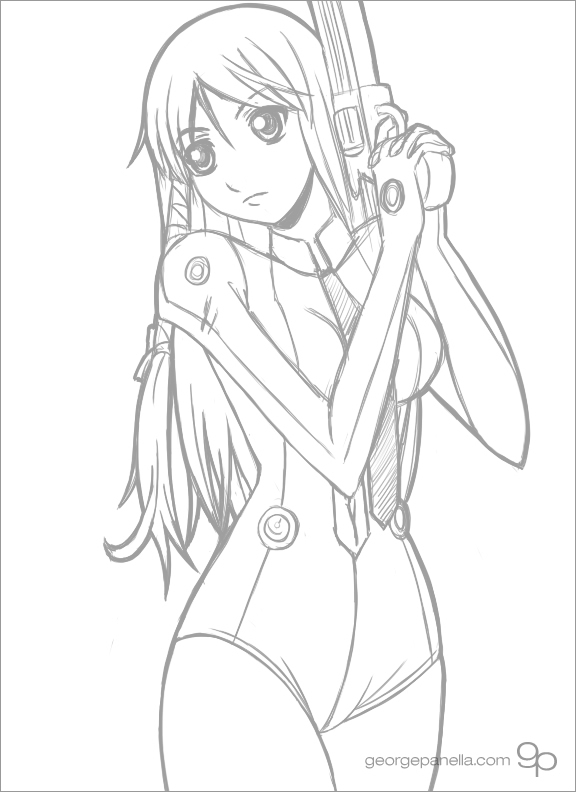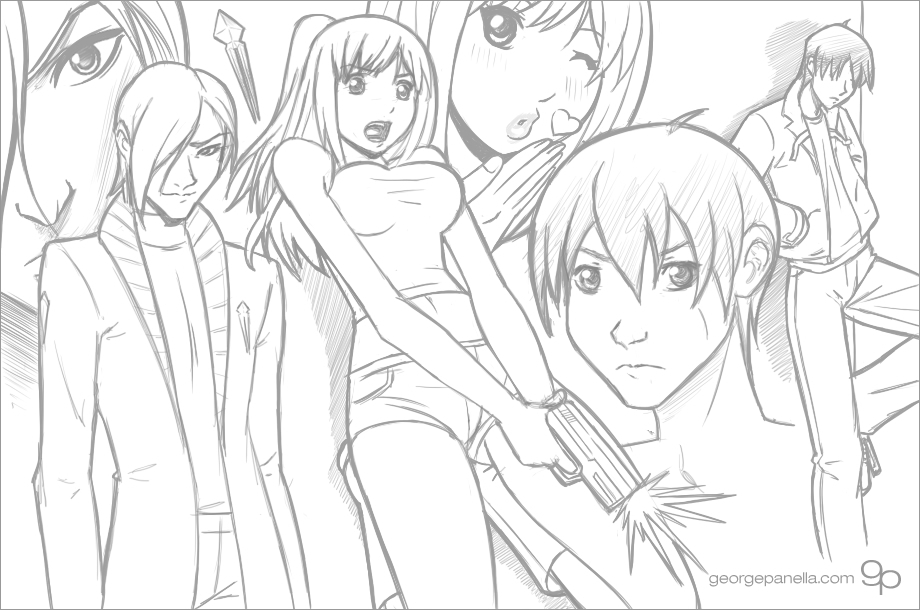Today I want to talk about developing a story. During the process to create my next webcomic the biggest hurdle for me has been story development. For many months I’ve been stuck on the story, going through many ideas. I had a basic setting in mind and most of the primary characters were already created, I just needed a story.
My last couple of comics were weakest in the story department (among, probably, many other things). I was rushed to get them started and just went with the first thing that came to mind. This has proven to be a major oversight. It got to the point that I was developing the story page by page each week. This created a complete lack of consistency and plot development. Half the time “I” didn’t even know where the story was going.
This time, however, I wanted to really plan things out and do it properly. But what started as, what was supposed to be, a simple and fun little story turned into a self-made trap. I became overly critical and for many months got stuck on the small details, keeping me from moving forward. New games didn’t help me either. It’s good to want to do something well and the “right way,” but when it causes you to become overly-critical of the details you can lose the bigger picture and you won’t be doing yourself any favors. You may become frustrated and give up.
 Personally, I love to create characters. A lot of my ideas come from my sketches alone. I may have one thing in mind, but something else appears in a doodle that sparks a new idea. However, this can only get me so far. Eventually I need to sit down and actually plan out the whole thing.
Personally, I love to create characters. A lot of my ideas come from my sketches alone. I may have one thing in mind, but something else appears in a doodle that sparks a new idea. However, this can only get me so far. Eventually I need to sit down and actually plan out the whole thing.
So with a new year and the realization I wasn’t making progress, I started to work on it again, but this time I tried a different approach. I took a step back and tried to look at the overall picture. I had a beginning in mind, something that I usually have an easy time with, but I needed an ending. So instead of trying to think really big for some grand ending, I tried to think smaller.
Taking the beginning that I had previously created, instead of starting over, I tried to think how the characters could have reached that point. What caused this event to begin? I erased some previous reasons and twisted things around. Whenever I ran into a dead-end I tried adding a new character to help move things forward. Characters or situations that try to stop a character from his/her goals is the core basis for a story plot. You need a character or event to start the “domino effect,” so to speak. Figuring out why that happened and how to change it or stop it can help you develop an ending. Before I knew it, by thinking of what triggered my beginning, I had a plot that could lead me to an ending.
This is a good way to come up with ideas for just about anything. Something as simple as adding a new element to the mix or looking at all your elements from other angles can surprise you with new ideas. Even just sketching on paper can help. I’ve been able to add small details to my story due to random sketches. Say, I draw a watch on a character — then I might think about how the character got that watch and is there a story behind it.
Once there is a beginning and ending in mind you can move to filling in the details and add events that happen in the middle. To break things down into managable chunks, I started thinking of story ideas in terms of “episodes”. Another thing you can do is put ideas on index cards. To make things simple I planned for a 13 “episode” “season.” With that in mind I just started to jot down random ideas for “episodes.” I didn’t limit myself at first, I just wrote down any idea that came to me. I continued this process for a couple days until I had a nice list. If it’s easier for you to think in chapters, episode, or use index cards then do so. Any method that helps you organize your thoughts is a step forward. The worst thing you can do is stifle your progress by trying to do things a certain way.
From my list not all ideas stood out, so I started to pick my favorite ones and then arrange them in an order that seemed to make sense. Like I said before, this method works as well with index cards. You can write an idea for an “episode” or chapter on a card and then when you have several you can move them around and see how they might connect. New ideas might spark from the arrangement alone. An idea for one might be combined with another to make an even more interesting idea. I’m going to keep my old ideas as well. You should never throw out an idea. Keep it for later or for another story. You never know when it can come in handy.
From here you can think about an overall story flow keeping in mind things like “Introduction,” “Transition,” “Turn,” and “Conclusion.” This is the Chinese method of making stories and poetry, Ki-Sho-Ten-Ketsu. You could also think of it as “Introduction,” “Development,” “Climax,” and “Conclusion.” For my story, that will span several “episodes,” I needed to think of a flow for each “episode” and one for the overall story that leads to the ending. So when arranging my individual story ideas (episodes) I placed the ideas that seemed more introduction-based towards the beginning and ones that could be a climax that could lead into the ending towards the end of the list.
These are just the very basic steps I’ve taken to help me develop my story. There are many ways to go about it and there are other things to consider such as character personalities and desires, the world/setting and its rules, subplots, and many more. Don’t let yourself get too bogged down in the details or methods. That can be a quick path to idea-block. And always be on the look out for ideas from any location like books, sketches, TV, news, and music etc.
As I begin to narrow down my story I’m slowly gaining focus on the characters in it. Like I said before, just from sketching random ideas can crop up.
Have you ever created a story? What methods helped you develop it? What did you feel worked and didn’t work?

![]()
